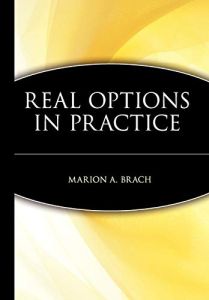Join getAbstract to access the summary!

Join getAbstract to access the summary!
Marion A. Brach
Real Options in Practice
Wiley, 2003
What's inside?
To make better management decisions (and not just in the financial realm), exercise your real options.
Recommendation
No financial innovation of the past half-century has been more important than option analysis. The notion that option analysis could help corporate managers make more effective investment decisions was bold news in the early 1980’s, but did not make much of an impact beyond rather narrow circles. Options are hard to understand - the math can be intimidating and few people have been able to explain option analysis in a way that makes sense to the financial laity. This book is, therefore, long overdue. Marion A. Brach delivers the essential logic and analytical framework of real options to any corporate manager. The text can be heavy going at times, and the author has an annoying habit of referring to examples without explaining them (footnotes cite other publications where explanations may be found). Still, getAbstract.com recommends this book highly. It shows why there is more to management decisions than many managers may have heretofore considered.
Summary
About the Author
Marion A. Brach, M.D., M.B.A., is a polymath. She began her career as a medical doctor, and later took an M.B.A. from Manchester Business School, and developed an expertise in real options analysis. She speaks frequently at seminars.
















Comment on this summary